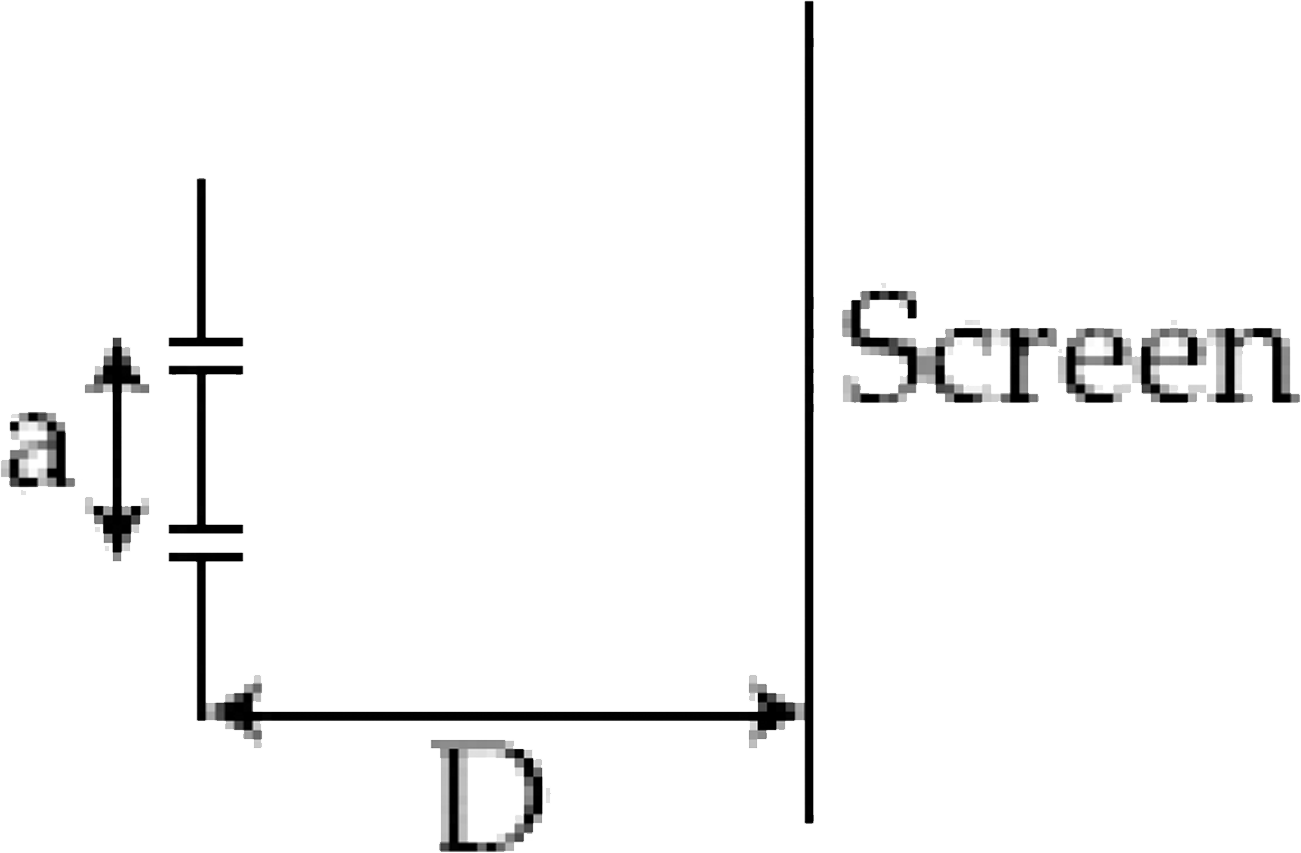When a mica plate of thickness 0.1mm is introduced in one of the interfering beams, the central fringe is displaced by a distance equal to 10 fringes. If the wavelength of the light is 6000A0, the refractive index of the mica is
1.06
1.6
2.4
1.2
The correct Answer is:A
To find the refractive index of the mica plate, we can follow these steps:
Step 1: Understand the relationship between fringe shift and refractive index
When a mica plate is introduced in one of the interfering beams, it causes a path length change that results in a fringe shift. The formula for the fringe shift (Δx) when a mica plate of thickness t and refractive index μ is introduced is given by:
Δx=βλ⋅(μ−1)⋅t
Where:
- Δx = fringe shift (in terms of fringe width)
- β = fringe width
- λ = wavelength of light
- t = thickness of the mica plate
- μ = refractive index of the mica
Step 2: Relate fringe shift to the number of fringes
It is given that the central fringe is displaced by a distance equal to 10 fringes. Therefore, we can express the fringe shift as:
Δx=10⋅β
Step 3: Substitute the expression for fringe shift into the formula
Substituting Δx=10⋅β into the original formula gives us:
10⋅β=βλ⋅(μ−1)⋅t
Step 4: Cancel out β
Assuming β≠0, we can cancel β from both sides:
10=1λ⋅(μ−1)⋅t
Step 5: Rearrange the equation to solve for μ−1
Rearranging the equation gives:
μ−1=10⋅λt
Step 6: Substitute the known values
Now, substitute the values for λ and t:
- λ=6000Å=6000×10−10m
- t=0.1mm=0.1×10−3m=10−4m
Substituting these values into the equation:
μ−1=10⋅6000×10−100.1×10−3
Step 7: Calculate μ−1
Calculating the right side:
μ−1=10⋅6000×10−1010−4=10⋅6000×10−6=60×10−6=0.06
Step 8: Solve for μ
Now, adding 1 to both sides gives:
μ=1+0.06=1.06
Conclusion
The refractive index of the mica is:
μ=1.06
When a mica plate is introduced in one of the interfering beams, it causes a path length change that results in a fringe shift. The formula for the fringe shift (Δx) when a mica plate of thickness t and refractive index μ is introduced is given by:
- Δx = fringe shift (in terms of fringe width)
- β = fringe width
- λ = wavelength of light
- t = thickness of the mica plate
- μ = refractive index of the mica
It is given that the central fringe is displaced by a distance equal to 10 fringes. Therefore, we can express the fringe shift as:
Substituting Δx=10⋅β into the original formula gives us:
Assuming β≠0, we can cancel β from both sides:
Rearranging the equation gives:
Now, substitute the values for λ and t:
- λ=6000Å=6000×10−10m
- t=0.1mm=0.1×10−3m=10−4m
Calculating the right side:
Now, adding 1 to both sides gives:
The refractive index of the mica is:
Topper's Solved these Questions
- WAVES OPTICSBOOK - AAKASH SERIESCHAPTER - WAVES OPTICSEXERCISE - EXERCISE -II (DIFFRACTION)
17 Videos
- WAVES OPTICSBOOK - AAKASH SERIESCHAPTER - WAVES OPTICSEXERCISE - EXERCISE -II (POLARISATION)
10 Videos
- WAVES OPTICSBOOK - AAKASH SERIESCHAPTER - WAVES OPTICSEXERCISE - EXERCISE -IB (ASSERTION AND REASON)
67 Videos
- WAVESBOOK - AAKASH SERIESCHAPTER - WAVESEXERCISE - EXERCISE-III (Doppler effect :)
15 Videos
Similar Questions
In Young's double slit experiment a mica sheet of thickness t and refractive index μ is introduced in the path of ray from the first source S1 By how much distance thhe fringe pattern will be displaced.
View SolutionIn YDSE a thin film (μ=1.6) of thickness0.01μm is introduced in the path of one of the two interfering beams. The central fringe moves to a position occupied by the 10th bright fring earlier. The wave length of wave is
View Solution
Knowledge Check
On introducing a thin film in the path of one of the two interfering beam, the central fringe will shift by one fringe width. If μ=1.5, the thickness of the film is (wavelength of monochromatic light is λ)
A4λB3λC2λDλ
The figure shows a Young's double slit experimental setup. It is observed that when a thin transparent sheet of thickness t and refractive index μ is put front of one of the slits, the central maximum gets shifted by a distance equal to n fringe widths. If the wavelength of light used is λ, t will be :

View SolutionIn a Young.s double slit experiment, the fringes are displaced by a distance x when a glass plate of refractive index 1.5 is introduced in the path of one of the beams. When this plate is replaced by another plate of same thickness, the shift of fringes is (3/2)x. The refractive index of second plate is
View SolutionWhen the plastic thin film of refractive index 1.45is placed in the path of one of the interfering waves then the central fringe is displaced through width of five fringes.The thickness of the film will be ,if the wavelength of light is5890Å
View SolutionInterference fringes are produced by a double slit arrangement
and a piece of plane parallel glass of refractive index 1.5 is interposed in one of
the interfering beam. If the fringes are displaced through 30 fringe widths for
light of wavelength 6×10−5cm, find the thickness of the plate.
View SolutionIn YDSE the distance between the slits is 1mm and screen is 25nm away from intensities IF the wavelength of light is 6000A the fringe width on the screen is
View SolutionIn YDSE, the sources is red ligth of wavelength 7×10−7m. When a thin glass plate of refractive index 1.5 is put in the path of one of the interfering beams, the central bright fringe shifts by 10−3 m to the position previously occupied by the 5th bright fringe.
What is the thickness of the plate?
View SolutionIn Young's double slit experiment, the fringes are displaced index 1.5 is introduced in the path of one of the beams. When this plate in replaced by another plate of the same thickness, the shift of fringes is (3/2)x. The refractive index of the second plate is
View Solution
